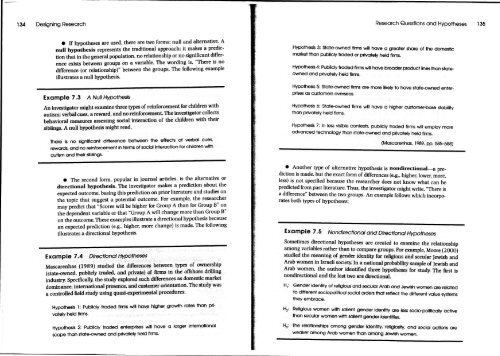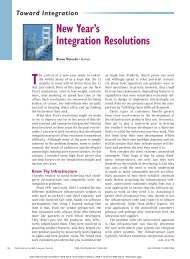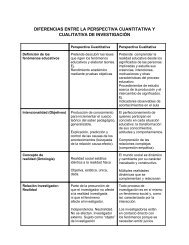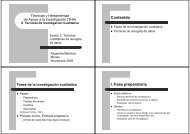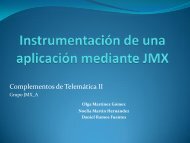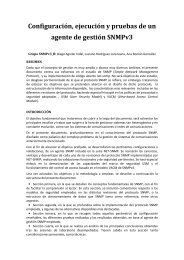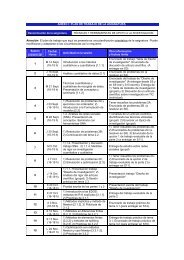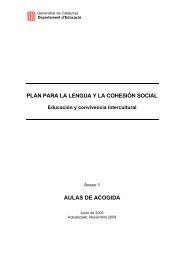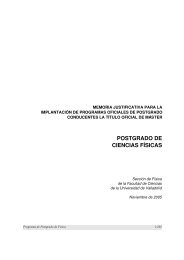Research Questions and Hypotheses
Research Questions and Hypotheses
Research Questions and Hypotheses
Create successful ePaper yourself
Turn your PDF publications into a flip-book with our unique Google optimized e-Paper software.
134 Designing <strong>Research</strong><br />
<strong>Research</strong> <strong>Questions</strong> <strong>and</strong> <strong>Hypotheses</strong> 135<br />
If hypotheses are used, there are two forms: null <strong>and</strong> alternative. A<br />
null hypothesis represents the traditional approach: it makes a prediction<br />
that in the general population, no relationship or no significant difference<br />
exists between groups on a variable. The wording is, "There is no<br />
difference (or relationship)" between the groups. The following example<br />
illustrates a null hypothesis.<br />
Example 7.3 A Null Hypothesis<br />
An investigator might examine three types of reinforcement for children with<br />
autism: verbal cues, a reward, <strong>and</strong> no reinforcernent. The investigator collects<br />
behavioral measures assessing social interaction of the children with their<br />
siblings. A null hypothesis might read,<br />
There is no significant difference between the effects of verbal cues,<br />
rewards, <strong>and</strong> no reinforcement in terms of social interaction for children with<br />
autism <strong>and</strong> their siblings.<br />
The second form, popular in journal articles, is the alternative or<br />
directional hypothesis. The investigator makes a prediction about the<br />
expected outcome, basing this prediction on prior literature <strong>and</strong> studies on<br />
the topic that suggest a potential outcome. For example, the researcher<br />
may predict that "Scores will be higher for Group A than for Group B" on<br />
the dependent variable or that "Group A will change more than Group B"<br />
on the outcome. These examples illustrate a directional hypothesis because<br />
an expected prediction (e.g., higher, more change) is made. The following<br />
illustrates a directional hypothesis.<br />
Example 7.4 Directional <strong>Hypotheses</strong><br />
Mascarenhas (1989) studied the differences between types of ownership<br />
(state-owned, publicly traded, <strong>and</strong> private) of firms in the offshore drilling<br />
industry. Specifically the study explored such differences as domestic market<br />
dominance, international presence, <strong>and</strong> customer orientation. The study was<br />
a controlled field study casing quasi-experimental proculures.<br />
Hypothesis 1: Publicly traded firms will have higher growth rates than privately<br />
held firms.<br />
Hypothesis 2: Publicly traded enterprises will have a larger International<br />
scope than state-owned <strong>and</strong> privately heid firms.<br />
Hypothesis 3: State-owned firms will have a greater share of the domestic<br />
market than publicly traded or privately heid firms.<br />
Hypothesis 4: Publicly traded firms will have broader product unes than stateovvned<br />
<strong>and</strong> privately heid firms.<br />
Hypothesis 5: State-owned firms are more likely to have state-owned enterprises<br />
as customers overseas.<br />
Hypothesis 6: State-owned firrns will have a higher customer-base stability<br />
than privately held firms.<br />
Hypothesis 7: In less visible contexts, publicly traded firms will employ more<br />
advanced technology than state-owned <strong>and</strong> privately held firms.<br />
(Mascarenhas, 1989, pp. 585-588)<br />
Another type of alternative hypothesis is nondirectional—a prediction<br />
is made, but the exact form of differences (e.g., higher, lower, more,<br />
less) is not specified because the researcher does not know what can be<br />
predicted from past literature. Thus, the investigator might write, "There is<br />
a difference" between the two groups. An example follows which incorporates<br />
both types of hypotheses:<br />
Example 7.5 Nondirectional <strong>and</strong> Directional <strong>Hypotheses</strong><br />
Sometimes directional hypotheses are created to examine the relationship<br />
among variables rather than to compare groups. For example, Moore (2000)<br />
studied the meaning of gender identity for religious <strong>and</strong> secular Jewish <strong>and</strong><br />
Arab women in Israeli society. In a national probability sample of Jewish <strong>and</strong><br />
Arab women, the author identified three hypotheses for study. The first is<br />
nondirectional <strong>and</strong> the last two are directional.<br />
H 1: Gender Identity of religious <strong>and</strong> secular Arab <strong>and</strong> Jewish women are related<br />
to different sociopolitical social orders that reflect the different value systems<br />
they embrace.<br />
Religious women with salient gender identity are less socio-politically active<br />
than secular women with salient gender identities.<br />
H3: The relationships among gender Identity, religiosity, <strong>and</strong> social actions are<br />
weaker among Arab women than among Jewish wornen.


